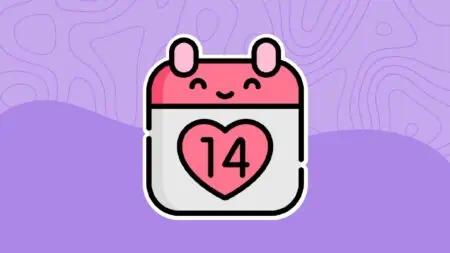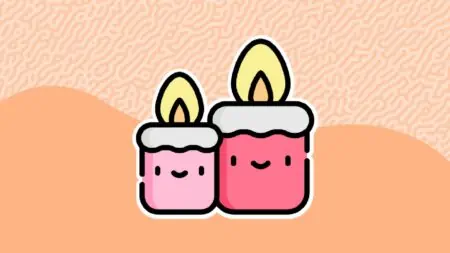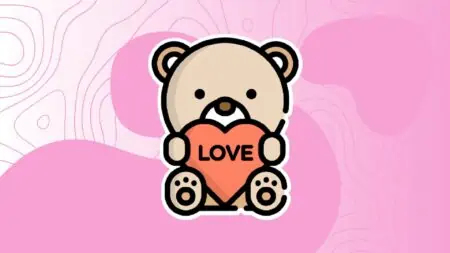There are so many little-known Valentine’s Day facts and statistics. There’s a lot to learn, from Cupid’s origins to why we traditionally give heart-shaped chocolates and teddy bears.
Discover the many meanings and traditions behind Valentine’s Day, from Roman myths to modern-day Valentine’s Day cards. Our 40 fun facts about Valentine’s Day will make you an expert on all things romance and love.
Top 10 Valentine’s Day Facts and Statistics
These top 10 Valentine’s Day facts and statistics are all the signs of love you need this year.
- On average, six million couples get engaged on February 14.
- Valentine’s day began as an ancient Roman fertility festival called “Lupercalia.”
- The city with the most expensive Valentine’s Day budget is Los Angeles, CA, at an average of $1,316.
- Valentine’s Day is one of the busiest days for restaurants, second only to Mother’s Day.
- American households spend $751.3 million on gifts for their pets on Valentine’s Day.
- Chocolate sales represent 75% or more of Valentine’s Day candy purchases.
- “Vinegar Valentines” was once a crazy way to deter suitors in Victorian England.
- A dozen red roses cost an average of $97.22 in 2019.
- Teachers receive the most Valentine’s Day cards, followed by children, mothers, and wives.
- The first Valentine’s Day cards were mass-produced in the U.S. in 1847.
40 Valentine’s Day Facts and Statistics
Pop the champagne, open a box of heart-shaped chocolates, and grab your cuddliest teddy bear. You’ll find the best Valentine’s Day facts and history here, so let’s get started.
Fun Facts About Valentine’s Day
1. Pop the Question
It’s said that six million couples become engaged on February 14 per year (1). Valentine’s Day was voted the top day of the year to propose. It’s not just the ladies who think romance is key on February 14; 40% of those who think it’s the best time to propose were men (2).
2. Day for Lovers
Latin American countries celebrate “el Día de Los Enamorados” (the “day of lovers”) or “el Día del Amor y la Amistad” (the “day of love and friendship”). Couples still give each other gifts of candy and chocolate, but the holiday is also all about friendship (3).
3. Love Birds
The Agapornis bird is a parrot found in Africa. They travel in pairs of two, which is why both the parrots and happy couples are referred to as “lovebirds.”
4. Holiday Observance
In 1969, Pope Paul VI removed Valentine’s Day from the calendar of major holidays because the information was scarce about St. Valentine (4). Anglicans and Lutherans observe the holiday on February 14, while the Eastern Orthodox Church celebrates it on July 6.
5. A Very Vinegar Valentine
“Vinegar Valentines” was once a crazy way to deter suitors in Victorian England. They were also called “penny dreadfuls” and involved cruel but often funny verbal insults to keep unwanted suitors at bay.
6. Out to Dinner
Valentine’s Day is one of the busiest days of the year for restaurants, second only to Mother’s Day. The estimated cost of a romantic dinner on Valentine’s Day in 2018 was $139 per couple (5).
7. With a Kiss
“XOXO” means “hugs and kisses” to most of us. It originated in the Middle Ages, when letters were finished with the “X” sign of the cross and a kiss as an oath. It became a popular way to sign letters and the meaning of XOXO turned into “sealed with a kiss.”
8. Singles Day
International Quirkyalone Day is a holiday for single people that also occurs on February 14. It’s an opportunity to celebrate self-love and friendships. International Quirkyalone Day has been in existence since 2003 (6).
9. Dear Juliette
Writing letters to Juliet has become a Valentine’s Day tradition since the 1930s. Thousands of letters are sent to Verona, Italy, and addressed to the Romeo and Juliet character, Juliet Capulet. People called “Juliet’s secretaries” read through the letters and pick the best one. The lucky winner visits Juliet’s home in Verona for a fun ceremony.
10. Last-Minute
Approximately 50% of Valentine’s Day cards and gifts are purchased just six days before February 14 (7). Hallmark created 1,500 varieties of Valentine’s Day greeting cards to choose from in 2017 (8).
History of Valentine’s Day
1. My Pagan Valentine
Valentine’s day began as an ancient Roman fertility festival called “Lupercalia.” It was marked on February 15 and dedicated to Faunus, the Roman god of agriculture, and Lupa, the wolf said to have suckled Romulus and Remus. The celebration included the sacrifice of animals and a weird ritual of hitting women with animal hides to inspire fertility.
2. St. Valentine
St. Valentine was more than one person, according to Valentine’s Day facts and history. One St. Valentine was a 3rd-century Roman priest. He went against Emperor Claudius II’s ban on marriage by illegally marrying couples. He was imprisoned and sentenced to death for the irreverent act in the name of love.
3. Officially Valentine
In the 5th century, Roman Pope Gelasius officially declared February 14 St. Valentine’s Day. It became associated with romance in the Middle Ages when the idea of courtly love was born around the world.
4. The Myth of Cupid
Some weird Valentine’s Day trivia states that Cupid originated in 700 B.C. The Greek god Eros had the power to make people fall in love. In the 4th century BCE, he was transformed from a strong man into a little boy with a bow and arrow called “Cupid.”
5. Red, Red Roses
The custom of giving flowers can be traced back to King Charles II of Sweden, who was inspired by a trip to Persia. The Victorians love giving flowers, which helped flowers — and red roses in particular — become symbols of love for Valentine’s Day.
6. Valentine’s Day Cards
Americans send about 145 million Valentine’s Day cards every year. Valentine’s Day is the second biggest holiday for exchanging greeting cards, second to Christmas. Hallmark created its first Valentine’s card in 1913 and has made massive numbers of cards since then (9).
7. For the Children
Fifty-nine percent of spouses typically give their partners a gift for Valentine’s Day. Meanwhile, 85% of parents give their children Valentine’s Day gifts (10). It’s a wonderful way to make sure kids feel appreciated while teaching them how to show love to others.
8. Love Poem
The oldest known Valentine poem was written by a French medieval duke to his wife in 1415. He sent this ode to love and romance to her while in prison in the Tower of London. The poem includes the lines “I am already sick of love, My very gentle Valentine” (11).
9. Heart on the Sleeve
During the Middle Ages, people drew names to find out who their Valentine would be. They’d pin the name to their sleeve for a week, so everyone could see. It may be the root of the famous term “wearing your heart on your sleeve.”
10. For Love of Hearts
French artists in the 13th century were the very first to use the imagery of hearts in their work. The 1250 illustration Le Roman de la Poire (“Romance of the Pear”) is the first example of the heart symbol used to signify love (12).
Valentine’s Day Cards and Gifts
1. Candy Hearts
Boston pharmacist Oliver Chase created America’s first candy-making machine. He first used it to make lozenges but began making candy soon after. He started the Necco candy company responsible for the candy conversation hearts we know today (13).
2. Hearts for Teacher
Teachers receive the most Valentine’s Day cards, followed by children, mothers, and wives (14). It’s become commonplace for elementary students to give their teachers cards for Valentine’s Day and sometimes a small gift in appreciation. Valentine’s Day cards are still cool gifts for students to exchange.
3. Love for Fluffy
American households spend $751.3 million on gifts for their pets on Valentine’s Day. Nearly 28 million American households bought Valentine’s Day gifts for their dogs in 2020, while 17.1 million got gifts for their cats (15). It’s one of those fun facts about Valentine’s Day that warms hearts.
4. Sparkle and Shine
The most popular gift for Valentine’s Day is jewelry, for which $5.8 billion was spent in 2020 (16). $4.3 billion was spent on taking your Valentine out to dinner (17). Over $2.3 billion was spent on flowers, while $2.2 billion was spent on candy (18).
5. Heart-Shaped Box
The first heart-shaped box of chocolates was made in 1861 by Richard Cadbury, son of Cadbury founder John Cadbury (19). Today, 36 million heart-shaped boxes of chocolates are sold every year (20).
6. Be Mine
Necco makes nearly 100,000 pounds of their famous conversation candy hearts per day. The candy hearts come in a variety of 45 sayings that include classics like “True Love,” “Hug Me,” and “You Rock.” Manufacturing these candy hearts begins just after Valentine’s Day and lasts until mid-January to have enough for Valentine’s Day (21).
7. Red and Pink
About 65% of Americans think that the most festive Valentine’s Day treats, candies, and chocolates should be decorated in red and pink (22). Looks like they’re the official colors of Valentine’s Day for those who believe in random holiday superstitions.
8. An American Valentine
The first Valentine’s Day cards were mass-produced in the U.S. in 1847 by Esther A. Howland. She was called the “Mother of the American Valentine (23).” Her original cards were crafty creations that were often decorated with fancy lace and ribbons.
9. Chocolate is King
Men and women prefer to receive chocolate over flowers on Valentine’s Day. Chocolate represents 75% or more of Valentine’s Day candy purchases in total (24). Long live the romance of a good chocolate bar.
10. Favorite Flavors
Caramels are the most popular flavor found in chocolate boxes. It’s followed closely by chocolate-covered nuts, chocolate-filled chocolates, cream-filled chocolates, and coconut ones.
Valentine’s Day Spending
1. Who Celebrates
Younger people in a relationship are more likely to celebrate Valentine’s Day than their older counterparts. Sixty-eight percent of Americans under 35 honor Valentine’s Day, while 55% of 35 to 49-year-olds and 45% of 50 to 74-year-olds do (25). It seems to be a more interesting holiday for kids and younger adults than for seniors.
2. Men vs. Women
Women purchase 85% of all Valentine’s cards. Men usually spend five times more than women on gifts, so they more than make up for it (26).
3. Flowers
Valentine’s Day facts and statistics reveal that 28% of American adults purchased flowers or plants as gifts. Thirty-seven percent of those who did were men, while 19% were women. Red roses are the most popular flowers, but other bouquets, plants, and DIY kits can also make a wonderful surprise (27).
4. Candy Craze
Americans spent $1.8 billion on candy for this holiday. Eighty percent of American consumers usually purchase something sweet for their loved ones (28). This includes everything from chocolates and candy hearts to cupcakes or chocolate-covered strawberries.
5. Online Shopping
Thirty-eight percent of people celebrating Valentine’s Day do their shopping online (29). It’s easy to find great deals on gifts for spouses, kids, and pets. When it comes to items like baked goods, it’s best to do your shopping in person. This ensures your Valentine enjoys the freshest taste possible.
6. Total Spending
In 2010, 52%of Valentine’s Day spending was aimed at spouses and partners. Other consumers spent money on Valentine’s Day gifts for friends (7%), children’s classmates (7%), and family (15%). In 2021, $11.7 billion of the total spending went to significant others and spouses. Secondary spending for groups other than family members never rose above $3 million each (30).
7. Where to Shop
Thirty-six percent of Americans visit department stores to find gifts for Valentine’s Day; 9% of those consumers prefer specialty stores, while 17% visit florists. Small businesses, including jewelry stores, don’t do nearly as much business as their larger counterparts on Valentine’s Day (31).
8. A Dozen Roses
A dozen red roses cost an average of $97.22 in 2019, which increased by 2.52% from $94.83 in 2018. Flowers can be just as pricey (or sometimes more so) than an expensive meal out (32).
9. King of the Valentines
The top three Valentine’s Day card companies are currently Hallmark, Blue Mountain, and American Greetings. Something along the lines of 144 million people send Hallmark cards every year on Valentine’s Day (33).
10. City of Love
The city with the most expensive Valentine’s Day budget is Los Angeles, CA, at $1,316. Venice, Italy, and New York City come in second and third, spending $1,076 and $1,056, respectively. Sydney, Australia, and Zurich, Switzerland, complete the top five most expensive Valentine’s Day destinations (34).






